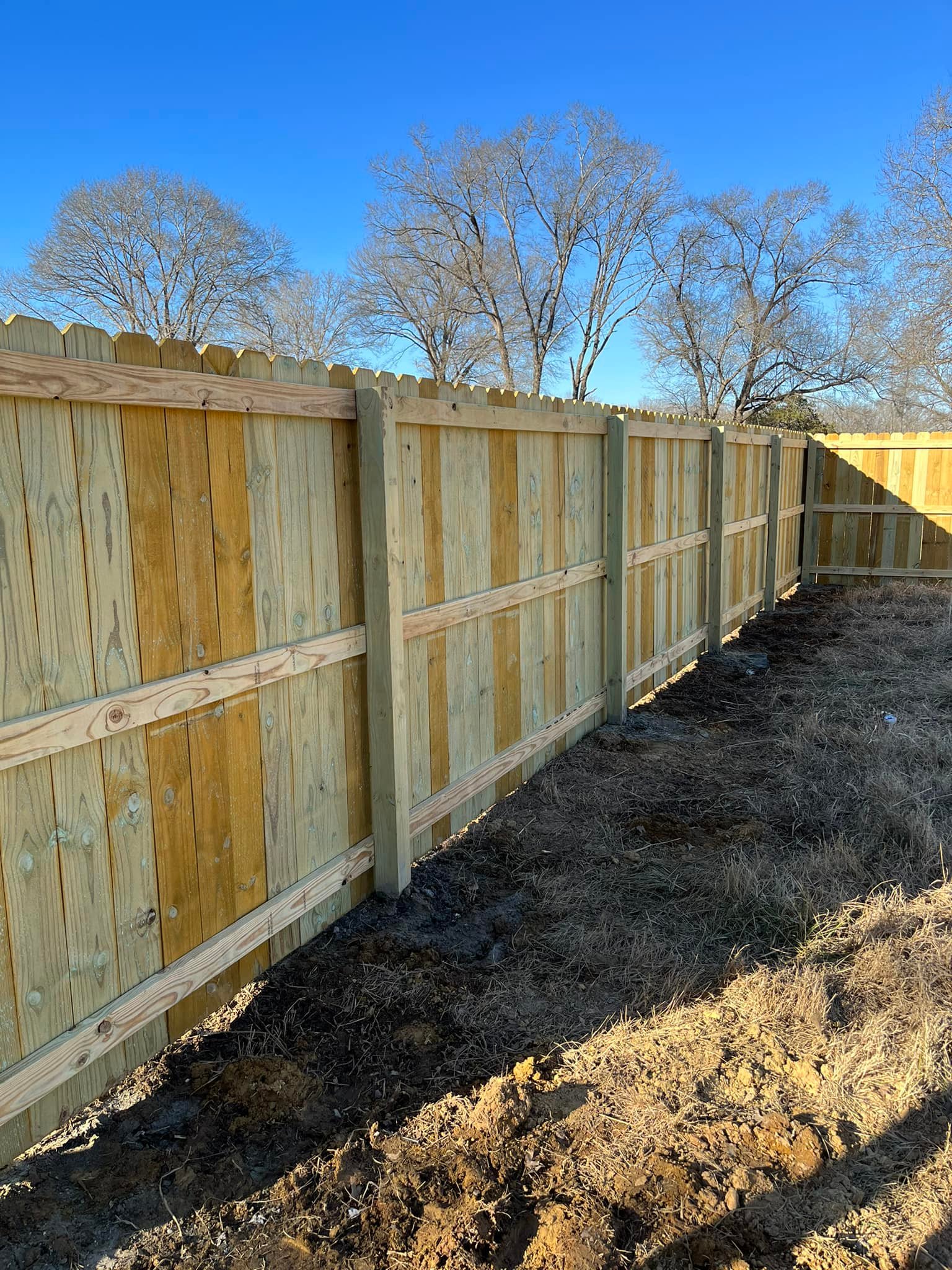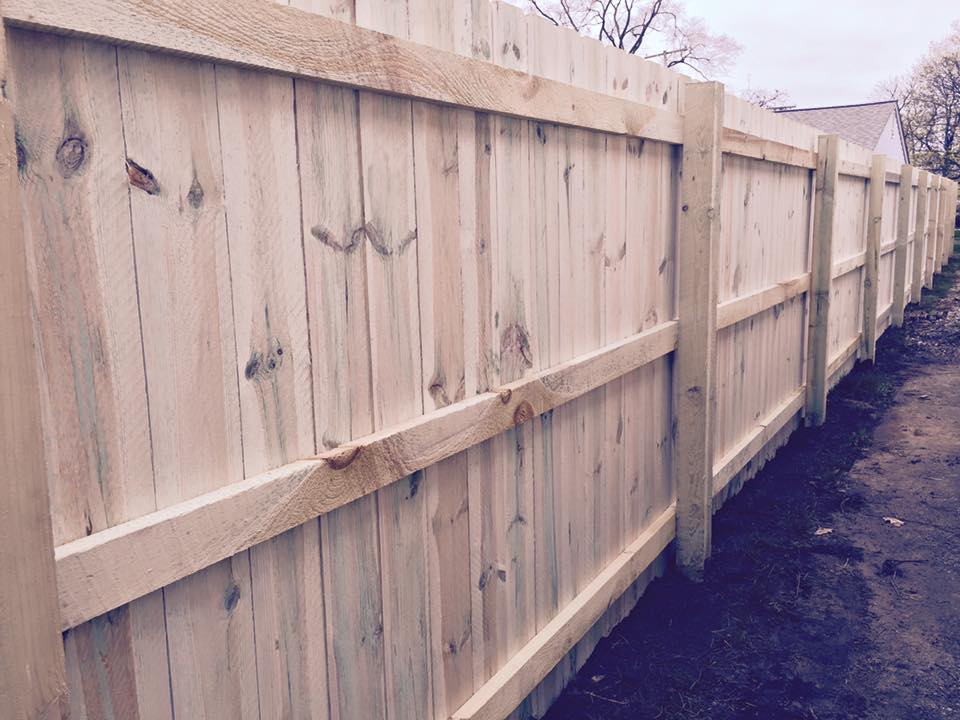Professional Wood Fence Installation Near Me Fort Smith AR: Trusted Local Experts
Professional Wood Fence Installation Near Me Fort Smith AR: Trusted Local Experts
Blog Article
Step-by-Step Overview to Installing a Timber Fencing for Your Home or Residential Property
Setting up a wood fence can dramatically enhance both the functionality and visual appeal of your home. Understanding these actions not only guarantees a strong setup however also contributes to long-term complete satisfaction.
Planning Your Fencing Installment
When starting the setup of a wood fence, mindful preparation is important to make sure an effective outcome. Begin by examining the objective of the fence-- whether it is for personal privacy, protection, or aesthetics-- given that this will influence the design and design. Next, assess the residential property lines, taking treatment to confirm the boundaries through a survey or title deed to stay clear of disagreements with neighbors.
Consider neighborhood zoning laws and homeowners' association guidelines, as these may determine fence elevation, style, and products. It is suggested to obtain the required permits prior to beginning job, as this can stop lawful problems later.
Additionally, think about the terrain and soil problems of your building. Unequal ground might call for additional adjustments during installment, while rough dirt could necessitate specialized devices.
Last but not least, develop an in-depth plan that consists of measurements, the variety of posts, and the spacing between them. A clear design will assist in the installation process and make sure that you have all needed products handy. By sticking to these preparation steps, you can establish a solid structure for an effective timber fencing installment.
Choosing the Right Materials
Selecting the proper products for your timber fencing is vital to making sure resilience and visual appeal. The most usual kinds of wood used for secure fencing consist of cedar, redwood, and pressure-treated yearn.
Pressure-treated ache is another preferred choice, as it is typically much more budget friendly. However, it calls for routine maintenance and treatment to extend its lifespan. When choosing timber, think about the climate of your area; for instance, areas with high moisture might profit from wood species with greater resistance to moisture.
A picket fence may need different material requirements compared to a privacy fence. By carefully picking your products, you can make sure that your timber fencing will stand the examination of time while enhancing your home's landscape.
Preparing the Setup Website

Preparing the installation site is an important action in guaranteeing the successful building and construction of your wood fencing. Correct preparation not just promotes a smoother installation procedure but additionally adds to the longevity and stability of the fence.

Following, assess the terrain. Get rid of any type of barriers such as rocks, origins, or particles that could prevent the installation procedure. Think about leveling it or changing your fence style as necessary if your website has uneven ground. Additionally, check for below ground utilities by calling your regional utility company. This is necessary to avoid damage during setup and guarantee safety and security.
Setting Up the Fencing Blog Posts

Next, dig holes for every message, guaranteeing they are deep sufficient-- generally one-third the height of the message above ground-- to offer stability. A depth of a minimum of 2 feet is suggested for a lot of fencings. The size of the openings must be around three times the width of the messages.
As soon as your holes prepare, place each message upright right into the marked opening. Use a level to ensure they are plumb, changing as necessary. After positioning, fill the holes with concrete mix or jam-packed soil for added support. Permit the concrete to cure as per the producer's instructions, usually 24 to 2 days. Properly installed messages are important for preserving the architectural stability of the fence, guaranteeing it remains upright and safe and secure versus ecological stresses.

Adding Fencing Panels and Finishing Touches
When the fence posts are firmly set, the following step entails affixing the fence panels, which will certainly define the limits of your residential property. Begin by positioning each panel between the posts, guaranteeing they are level and lined up. Make use of a level device to check that the panels are directly; this will certainly ensure an this page expert finish. For optimal stability, safe each panel to the posts utilizing galvanized screws or nails, which resist rust and rust.
After all panels are attached, examine the whole fence for any misalignments or gaps. Make modifications as necessary to ensure a consistent appearance. When pleased with the alignment, consider adding completing touches. Sand any type of harsh sides or surfaces to avoid splinters and boost appearances.
In addition, try here applying a safety discolor or sealant will boost the wood's sturdiness versus weather aspects, prolonging the life of your fencing. With these actions, your wood fencing will not only offer its function successfully but also enhance the total appeal of your residential property.
Conclusion
In final thought, the successful installation of a wood fencing calls for cautious preparation, option of ideal materials, complete website preparation, and accurate execution of installment methods. Appropriate upkeep post-installation further expands the life and look of the timber fencing.
When beginning on the installment of a timber fence, mindful planning is crucial to ensure a successful end result.Selecting the appropriate materials for your wood fencing is vital to ensuring resilience and visual appeal. A picket fence may call for different material requirements compared to a privacy fencing.With the setup site effectively prepared, the following step entails establishing the fence messages, which offer as the foundation of your wood fence.As see this website soon as the fencing blog posts are firmly established, the following step involves attaching the fencing panels, which will define the limits of your residential property.
Report this page